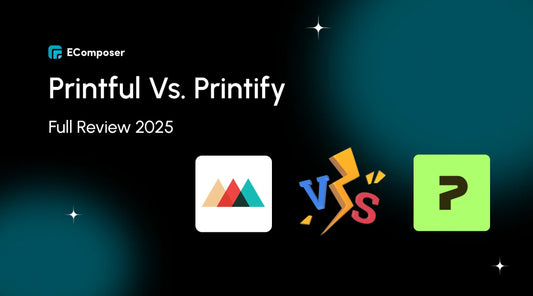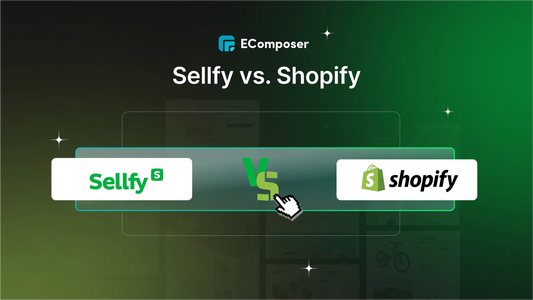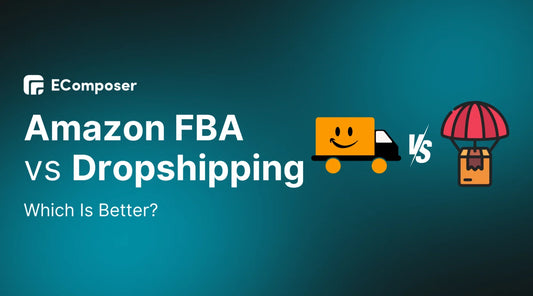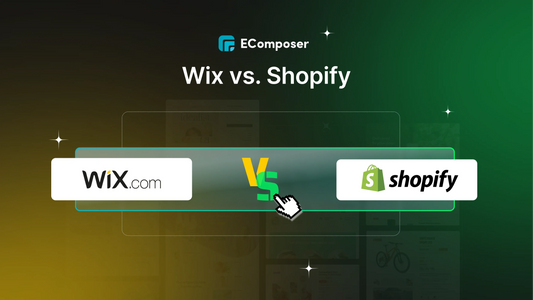Afterpay vs Shop Pay: Detailed 2025 Comparison | Fees, Features & Benefits
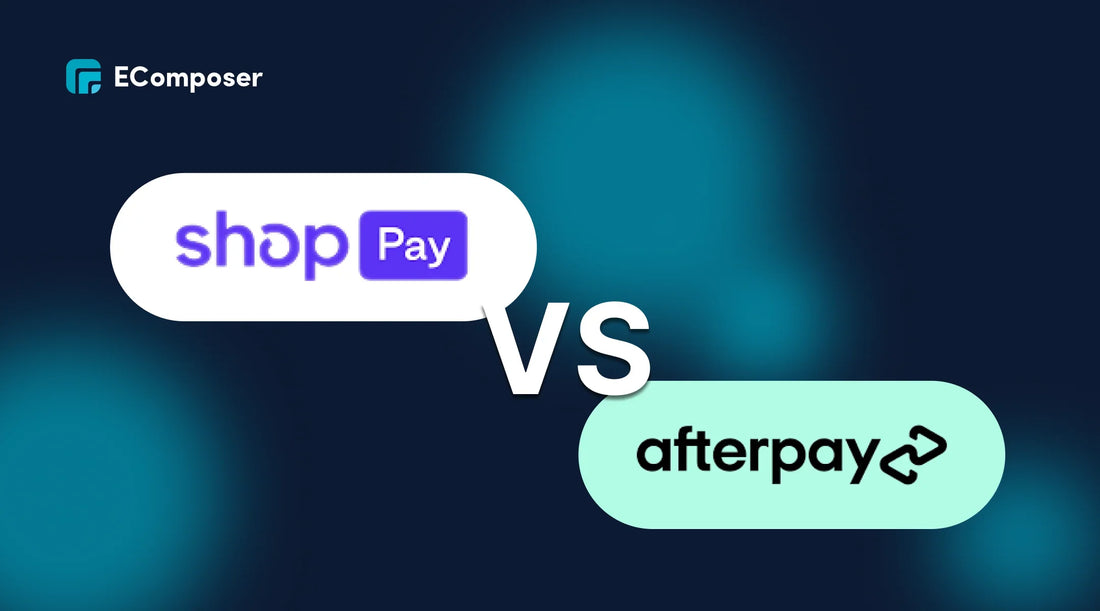
Table Of Contents
Running a Shopify store? Then you already know how much your checkout experience can impact conversions. In 2025, Buy Now, Pay Later (BNPL) isn’t just a nice-to-have - it’s what customers expect. That’s where two popular options come in: Shop Pay and Afterpay.
But here’s the thing: they’re not created equal.
While both promise flexibility and higher-order values, they work differently under the hood, and the right choice can make a big difference for your bottom line. Whether you're weighing Shop Pay installments or looking into Afterpay merchant fees, this guide is here to break it all down in plain English.
No fluff. No technical jargon. Just a clear, honest comparison that helps you pick the better fit for your Shopify checkout strategy - backed by real-world context, pros and cons, and merchant-friendly advice.
Let’s dive into the Shop Pay vs Afterpay showdown - so you can offer the best experience and grow your revenue at the same time.
Shop Pay and Afterpay: What Are They, Anyway?
If you're running a Shopify store, you already know this: checkout isn’t just the last step of the journey - it’s one of the most critical. And in today’s ecommerce world, offering flexible, customer-friendly payment options can mean the difference between a completed sale and an abandoned cart.
That’s why Buy Now, Pay Later (BNPL) options like Shop Pay and Afterpay are showing up in more and more online stores. But what are they exactly? And more importantly, what can they do for your business?
What is Shop Pay?
Shop Pay is Shopify’s built-in checkout solution - and it’s designed to do one thing really well: help your customers complete purchases fast. It saves their shipping and billing info, so they don’t have to retype anything the next time they visit your store (or any Shopify store).
But there’s more. With Shop Pay installments, eligible customers can break up their payments over time through Affirm, without leaving the checkout flow. No redirects. No friction.
For you as a merchant, that means:
- Faster, smoother checkouts
- Higher conversion rates, especially on mobile
- A clean and secure checkout experience that’s fully integrated with your Shopify store
Shopify has even reported that stores using Shop Pay see up to 1.72x higher conversion rates compared to other payment options. That’s not just convenience - it’s a real revenue boost.
What is Afterpay?
Afterpay is one of the biggest names in the BNPL world, and it's especially popular with younger shoppers who want more control over their spending. Instead of paying in full, customers can split their purchase into four interest-free payments, spread out over six weeks.
The big difference? Afterpay is a third-party platform. That means it’s not built into Shopify by default, but it can be integrated.
Here’s what Afterpay does for you:
- Pays you the full order value upfront
- Takes on the risk of collecting from the customer
- Charges you a merchant fee, typically between 4% and 6%
The integration takes more setup compared to Shop Pay. Still, many Shopify merchants find it worth it, especially if they sell fashion, lifestyle, or beauty products, where Afterpay’s brand recognition carries serious weight.
It’s also worth noting that some shoppers specifically seek out stores that offer Afterpay. So if your audience is BNPL-savvy, having it at checkout could tip the scales in your favor.
- Shop Pay is Shopify-native, frictionless, and gives you the option to offer installment payments with Affirm.
- Afterpay is a widely used BNPL app with strong consumer trust, but it requires integration and carries higher merchant fees.
Now that we’ve cleared that up, let’s get into the good stuff: how they compare side by side - features, fees, pros, cons, and what it all means for your business.
Shop Pay vs Afterpay: Detailed Features Comparison
Here’s a table summarizing the main differences:
|
Aspect |
Shop Pay |
Afterpay |
|
Availability |
Exclusive to Shopify merchants (~1.7M stores) |
Over 348k retailers, multiple platforms |
|
BNPL Model |
$50–$17,500; 4 biweekly payments ($50–$999.99, interest-free) or monthly with 10–36% APR |
4 interest-free payments over 6 weeks, up to $1,500 per transaction |
|
Fees |
No late fees; merchants pay Shopify fees (2.4%–2.9% + $0.30) |
Late fees up to 25% of installment; merchants pay 4%–6% + $0.30 |
|
Integration |
Native to Shopify, no extra setup |
Requires partnership/integration, native in Square POS |
|
Spending Limits |
No explicit limit; BNPL ranges vary |
$600 for first-timers, up to $2,000 for returning customers |
|
Approval Process |
Basic/no credit check |
Soft credit check, 18+ (19+ in some regions), U.S. resident |
|
Payment to Merchants |
1–3 business days |
1–2 business days |
|
Security |
Shopify’s tokenized data, PCI-compliant |
PCI DSS Level 1, real-time fraud monitoring |
|
Customer Experience |
One-click checkout, saved info |
Payment flexibility, broader retailer access |
As a Shopify merchant, you don’t just need a Buy Now, Pay Later solution - you need one that fits your store, your customers, and your growth goals. This comparison will give you a clear view of how Shop Pay and Afterpay stack up, feature by feature.
Let’s walk through the differences that matter most when it comes to choosing the right BNPL solution.
1. BNPL Model: How Each One Handles "Buy Now, Pay Later"
Shop Pay Installments uses Affirm as its lending partner. Depending on the customer’s eligibility and order value, they may qualify for four biweekly payments or monthly installment plans that can stretch up to 12 months. The best part? The entire transaction happens within the Shopify checkout - no redirects, no new tabs, no drop in conversion flow.
Afterpay, in contrast, is a fixed-model BNPL provider. Customers split their total into four interest-free payments over six weeks. No interest, no surprises. However, it redirects the customer to Afterpay’s interface at checkout, which introduces a new step and possibly some hesitation.
Merchant takeaway: Shop Pay offers flexible structures and a seamless experience. Afterpay’s simplicity and brand familiarity may appeal more to impulse buyers.
2. Payment Plans and Schedules: Flexibility vs. Simplicity
Shop Pay gives your customers choices. If they’re eligible, they can opt for either four interest-free payments every 2 weeks or extended monthly financing. This flexibility works well for high-ticket items and customers who need longer timelines.
Afterpay offers a rigid schedule - 4 equal payments, due every 2 weeks. It’s quick, predictable, and easy to understand, which is why many younger shoppers love it.
Merchant takeaway: If your product range includes both low and high-priced items, Shop Pay offers more adaptable solutions. Afterpay may be ideal if your average order value sits under $400 and your audience prefers simplicity.
3. Integration with E-commerce Platforms: How Easy Is Setup?
Shop Pay is native to Shopify, so you don’t have to lift a finger to enable it - it's already there. If you want to enable Shop Pay Installments, you’ll just apply to activate it through Affirm within your admin dashboard.
Afterpay is a third-party integration. You’ll need to create an Afterpay merchant account, go through onboarding, and follow Shopify’s setup instructions to add it to your store. It’s not difficult, but it’s still an extra workflow.
Merchant takeaway: Shop Pay wins here. If you're all-in on Shopify, the native setup will save you time and headaches. Afterpay, however, can serve multi-platform businesses.
4. Merchant Fees and Transaction Costs: What's the Real Cost?
Both platforms come with fees, and they’re surprisingly similar.
Shop Pay Installments, via Affirm, charges around 5–6% per transaction (varies by agreement and volume). These fees are only applied when a customer chooses to pay in installments, not on regular Shop Pay checkouts.
Afterpay also charges a merchant fee, generally around 4–6%, and a small fixed fee per transaction. Like Affirm, Afterpay handles the payment processing and assumes the risk, which justifies the cost.
Merchant takeaway: If you’re asking, “Is Shop Pay cheaper than Afterpay?” the answer is - it depends. Both are in the same ballpark, but final rates vary by merchant size, location, and negotiation.
5. User Eligibility and Setup Ease: Who Can Use It (and How Easily)?
Shop Pay is effortless to use for both merchants and customers. Setup is native in Shopify, and most shoppers with a US billing address and debit/credit card can use Shop Pay Installments, pending Affirm’s eligibility checks.
Afterpay requires a separate merchant onboarding, and while the customer side is straightforward, the setup is another process layered into your tech stack.
Merchant takeaway: If you value simplicity and speed, Shop Pay is easier to manage. Afterpay takes more effort but brings its loyal user base.
6. Interest Rates, Late Fees, and Hidden Costs: What Do Customers Pay?
Shop Pay may offer 0% APR or low-interest installment options depending on the customer’s credit profile. Late fees are minimal but possible. Since it’s Affirm-backed, customers may see a soft credit check for longer-term plans.
Afterpay is interest-free by default, which is a huge selling point. However, they do charge late fees if a payment is missed, which can be a concern for some shoppers.
Merchant takeaway: If transparency and “no surprises” are part of your brand, Afterpay’s fixed model may align better. Shop Pay offers more flexibility for shoppers who want different payment structures.
7. Customer Support Quality: Who Helps When Things Go Wrong?
Shop Pay support is part of Shopify's ecosystem. That means you’re likely already familiar with the help channels - no separate platform or ticketing system needed. If it’s about Installments, Affirm steps in to support the payment side.
Afterpay has customer support for both shoppers and merchants. They are responsive, but you’ll have to go outside your Shopify admin to manage issues.
Merchant takeaway: If you want centralized support and fewer moving parts, Shop Pay is easier to manage. Afterpay support is solid but not integrated.
8. Security: How Safe Is It for Buyers and Sellers?
Shop Pay is known for its best-in-class security. It uses encryption, tokenization, and biometric logins to protect payment and customer data. And since everything happens within Shopify, it reduces the number of steps and risk points.
Afterpay also uses strong security measures and is PCI-DSS compliant. That said, customers are redirected to their site to complete the process, which introduces a small layer of friction.
Merchant takeaway: Both platforms are secure, but Shop Pay’s fully native experience reduces exposure to outside systems.
9. Approval Process: Getting Started
Shop Pay Installments requires approval through Affirm. You apply directly from your Shopify dashboard, and the process generally takes a few business days. Once approved, it’s live inside your checkout.
Afterpay requires a separate application through their website. You’ll negotiate fees and submit business details, then follow their steps to integrate with your Shopify store.
Merchant takeaway: Shop Pay is quicker to activate if you’re already in the Shopify ecosystem. Afterpay takes longer but opens doors to its massive user base.
Ready to see how this plays out in real-life scenarios? In the next section, we’ll explore the pros and cons of Shop Pay and Afterpay - from a merchant’s point of view - so you can weigh what matters most to your business.
Important Considerations & Potential Drawbacks
Because even if both options sound great on paper, they each come with potential trade-offs that most comparison charts don’t talk about. And if you're a Shopify merchant trying to balance growth with profitability, these things do matter.
So, before you add that shiny new “Buy Now, Pay Later” button to your checkout, let’s cover the deeper considerations that might not be as obvious but could impact your business in the long run.
1. Checkout Experience: Seamless or Distracting?
One of the biggest factors influencing conversion rates is how smooth your Shopify checkout feels.
- Shop Pay keeps everything native. It’s fast, mobile-optimized, and doesn’t redirect your customers anywhere else. That means fewer distractions - and fewer chances for a shopper to back out last minute.
- Afterpay, while popular, adds a step. Once selected, shoppers are taken out of your store to complete the transaction. For some, that’s totally fine. But for others, especially on mobile, it might break trust or interrupt flow.
Why it matters: If your checkout abandonment rate is already high, adding a redirect might not be ideal.
2. Payment Flexibility vs. Predictability
Some merchants love how Shop Pay Installments offers flexible terms. Monthly payments? Biweekly? It adapts based on the shopper’s cart value and credit profile.
Afterpay, on the other hand, keeps it simple: 4 equal payments over six weeks, no exceptions.
The catch? With flexibility comes more variation. Some customers may not qualify for Shop Pay Installments at all, or may be surprised by the payment terms. Afterpay’s fixed model is crystal clear from the start.
Why it matters: If your customers value control and clarity, Afterpay’s predictability might be easier to communicate in your store messaging.
3. Merchant Fees: Not Always Transparent
We touched on fees in Part 2, but it’s worth going deeper.
Both Shop Pay Installments (via Affirm) and Afterpay come with merchant integration fees that cut into your margins, usually between 4% and 6%. And in both cases, those fees are in addition to your Shopify transaction fees.
The problem? These rates aren’t always clearly advertised. In some cases, they’re negotiated privately, especially for higher-volume stores.
Why it matters: If you're operating on tight margins - or selling low-ticket items - you'll want to do the math. What looks like a small fee can add up fast, especially if most customers opt into installment payments.
4. Return & Refund Complexities
Offering BNPL adds a layer of complexity to your refund and return process.
With Shop Pay Installments, refunds are handled through Affirm. It’s fairly streamlined and integrated into your Shopify admin, but it’s still one more relationship to manage.
With Afterpay, you need to log into their portal to issue refunds. It’s a separate dashboard, which adds time and training for your team.
Why it matters: If you already deal with high return volume (fashion, accessories, beauty), expect a learning curve and longer handling times when using third-party BNPL tools.
5. Customer Behavior: Helpful... or Habit-Forming?
Here's something you might not hear from BNPL providers: these services can encourage overspending.
On one hand, that means higher average order values for you, which is great.
On the other? It could mean more returns, more customer regret, or even chargebacks if a buyer stretches beyond their means.
Why it matters: If your brand focuses on trust and long-term loyalty, you should educate your customers on responsible use, or at least choose the platform that aligns best with your values.
6. Brand Positioning: Who Do You Want to Attract?
Finally, it’s worth asking: Who do you want shopping in your store?
Afterpay is loved by younger, trend-driven shoppers, especially in fashion, lifestyle, and wellness. If your products speak to impulse buyers and you want to ride the wave of BNPL culture, it can be a strong addition.
Shop Pay, meanwhile, is more universal. It speaks to loyal Shopify users, prioritizes ease over hype, and fits stores that care about checkout performance over trendy perks.
Why it matters: Your checkout experience is part of your brand. Choose a payment method that speaks the same language as your customers.
So, What’s the Takeaway?
Neither Shop Pay nor Afterpay is perfect. They each solve problems, but they can also introduce new ones if you’re not prepared.
The best choice depends on:
- Your margins and business model
- The behavior and expectations of your target customers
- How much control do you want over the checkout process
- Your team’s capacity to manage third-party tools
How to Choose Between Shop Pay and Afterpay
By now, you’ve probably realized that there’s no one-size-fits-all answer to the Shop Pay vs Afterpay question. Both are powerful in their ways. But which one makes the most sense for your store, your customers, and your long-term growth?
Let’s break it down based on real business use cases - so you’re not guessing, you’re choosing with purpose.
Who is Afterpay Best For?
If your brand serves trend-conscious shoppers, particularly younger buyers who value interest-free payments, Afterpay could be a smart move.
Here’s when Afterpay is likely the better choice:
- Your average order value is between $50–$300. That’s the sweet spot for Afterpay’s four-payment model.
- You sell lifestyle, fashion, or beauty products. Afterpay has a strong following in these verticals, and shoppers actively look for stores that offer it.
- You want to attract new customers via the Afterpay directory. Many shoppers browse Afterpay’s website or app for stores that accept it, giving you bonus exposure.
- You want predictable, simple BNPL terms. Afterpay’s fixed plan is easy to explain and easy for your team to manage.
Keep in mind: Afterpay charges merchant integration fees and will require a bit more work to connect to your Shopify store. But if the audience and AOV are a match, the ROI is often worth it.
Who is Shop Pay Best For?
If you want the most frictionless Shopify checkout experience, complete with installment payment flexibility and zero redirects, Shop Pay is a no-brainer.
Choose Shop Pay when:
- You want a fast, mobile-first checkout experience. Especially helpful if most of your traffic comes from mobile (which it probably does).
- You’re already using Shopify’s native tools. The integration is instant, and you don’t have to juggle another platform.
- You sell higher-ticket items. With Affirm-backed Shop Pay Installments, customers can choose longer payment terms, helping close big-cart hesitations.
- You care about brand trust and data privacy. Shop Pay keeps everything within the Shopify ecosystem, giving you more control and your customers more comfort.
Plus, studies show Shop Pay can improve checkout completion rates by over 1.7x compared to regular checkout. That’s not just a small lift - it’s a real boost in revenue.
The Best of Both Worlds? Can Shop Pay and Afterpay Coexist?
Here’s the good news: Yes, they can.
If you're wondering whether it's possible to offer Shop Pay and Afterpay at the same time, the answer is absolutely. Many Shopify stores do exactly that.
And in fact, offering both gives your customers the power of choice:
- Some will go with Shop Pay for the speed and convenience.
- Others may choose Afterpay because they already know and trust it.
The key is to communicate clearly at checkout. Make sure customers know:
- What are their options?
- What each option means (number of payments, fees, timing)
- That they’re still in control of how they pay
Pro tip: Keep your messaging customer-first. Instead of saying “We now accept Afterpay and Shop Pay Installments,” try something like:
“Pay your way - split your purchase with Afterpay or Shop Pay at checkout.”
Choosing With Confidence
The best BNPL solution is the one that helps your customers feel more confident buying and helps you grow without unnecessary complexity.
You might start with Shop Pay because it’s already built into Shopify. Or you might experiment with Afterpay if you’re aiming to capture a new customer segment.
Or maybe the smartest move… is both.
Coming up next: we’ll pull together the pros and cons of each platform, so that you can see it all in one place.
Let me know when you're ready for Part 5: Pros and Cons of Shop Pay vs Afterpay for Merchants.
Final thoughts - Which BNPL option is best for your business?
Choosing between Shop Pay and Afterpay comes down to your business goals and your customers’ expectations. Shop Pay offers a seamless, built-in experience for Shopify merchants, while Afterpay brings wide recognition and appeal, especially with younger shoppers. If it fits your brand, offering both can give your customers real payment flexibility. The best part? You’re now equipped to make that decision confidently, with your conversions, customer experience, and long-term growth in mind. Ready to upgrade your checkout?
FAQs - Shop Pay vs. Afterpay
1. Can I customize the look or placement of Shop Pay and Afterpay buttons on my product pages?
Yes, with a bit of theme editing or the right app, you can customize how these payment options appear. Shopify allows you to adjust the size, location, and design of Shop Pay checkout buttons using Liquid code or the Shopify theme editor. Afterpay provides a JavaScript snippet that displays the messaging and logo on product pages. If you're comfortable with a bit of front-end work, you can control visibility, reposition buttons, or even add dynamic text like “Pay in 4 with Afterpay” below your pricing.
2. Do Shop Pay or Afterpay affect my cash flow as a merchant?
No, they actually help keep your cash flow steady. Both Shop Pay Installments and Afterpay pay you the full transaction amount upfront, minus their fees. This means you don’t have to wait for the customer to complete their installment plan to receive your money. You can treat BNPL orders like any other in terms of fulfillment and accounting.
3. Will adding BNPL options slow down my store’s page speed?
In most cases, not significantly, but it depends on your setup. Shop Pay is native to Shopify and very lightweight, so it has minimal effect on site speed. Afterpay, however, uses a JavaScript widget to render its messaging and checkout logic, which can slightly affect performance if not managed correctly. To prevent slowdowns, make sure your theme loads scripts asynchronously and avoid too many third-party apps or pop-ups competing for resources.
4. Can I track the performance of Shop Pay Installments or Afterpay conversions separately?
Yes. Shopify reports give insights into Shop Pay usage, including how many of your customers choose to use Installments. You can also segment traffic and revenue in Shopify Analytics by payment method. Afterpay provides its own Merchant Portal, where you’ll find detailed analytics on transaction volume, order value, and repeat customer data. Many merchants use these insights to optimize promotions or A/B test placement and messaging.
5. Do these BNPL options work for subscription-based products?
Not currently. Shop Pay Installments and Afterpay only support one-time purchases, not recurring or subscription products. This means if you sell memberships, subscription boxes, or services billed monthly, these payment methods won't apply at checkout. However, you can still offer BNPL on pre-paid subscription bundles (e.g., “Pay for 3 months upfront in 4 interest-free installments”).
6. Are there any restrictions on which products I can sell using Afterpay or Shop Pay Installments?
Yes, and they’re important to understand before enabling BNPL. Shop Pay Installments (via Affirm) and Afterpay both have lists of restricted products. Common restricted categories include: tobacco and vaping products, alcohol (depending on jurisdiction), firearms and ammunition, digital currencies (like crypto), and adult content or products. Make sure your product catalog complies with each provider’s acceptable use policy, or you may risk having BNPL features disabled.
7. What happens if a customer disputes a Shop Pay Installment or Afterpay payment?
In the case of Shop Pay, payment disputes are handled by Affirm. You may be contacted for documentation (such as tracking info or proof of delivery), but Affirm takes responsibility for payment collection. Afterpay handles disputes through its support channels. Again, since you’re paid upfront, your revenue is usually protected, but you may need to cooperate during fraud investigations or chargebacks.
8. Can I promote Shop Pay or Afterpay in my marketing campaigns?
Absolutely - and you should. Promoting Shopify installments or “Pay in 4 with Afterpay” options in your product pages, email campaigns, and ads can increase conversions, especially for higher-priced items. Just be sure to follow brand guidelines: use approved logos and messaging from Shop Pay and Afterpay, include disclaimers like “Subject to approval,” and be transparent about payment terms.
9. Do Shop Pay or Afterpay work for international customers?
Shop Pay Installments are only available for customers with a US billing address and payment method. Afterpay operates in several countries, including the US, Australia, Canada, New Zealand, and the UK. However, you’ll need to activate each supported region through your Shopify settings and Afterpay account. If you’re planning to expand internationally, Afterpay may offer wider BNPL coverage, but it depends on your fulfillment model and store location.
10. Is it possible to restrict Shop Pay or Afterpay to only specific products or collections?
Shop Pay Installments are either on or off store-wide - you can’t restrict it at a product level. Afterpay does offer some flexibility. You can work with their merchant support to exclude certain products using custom tags or category rules. This can be useful if you want to offer BNPL only on higher-priced products or avoid compliance issues with restricted items.










